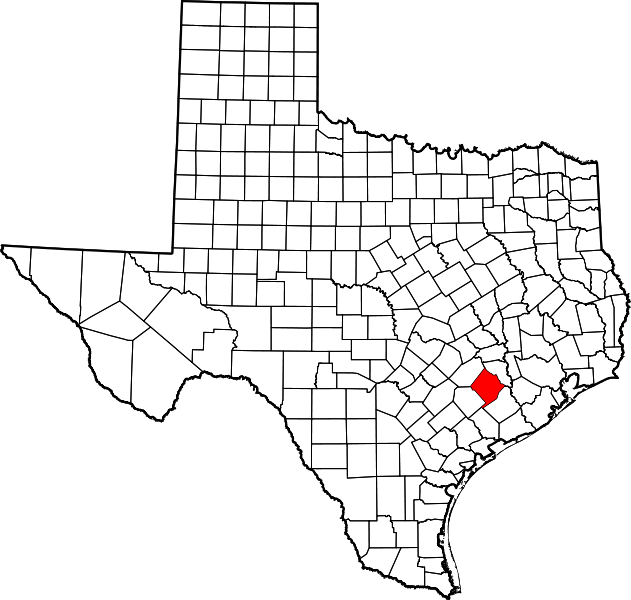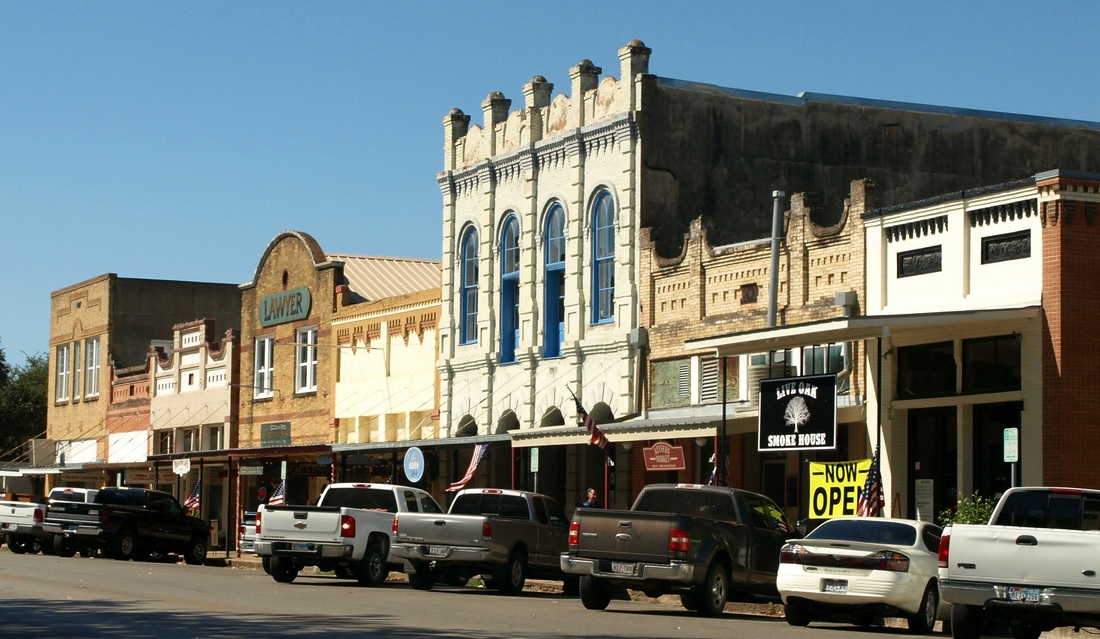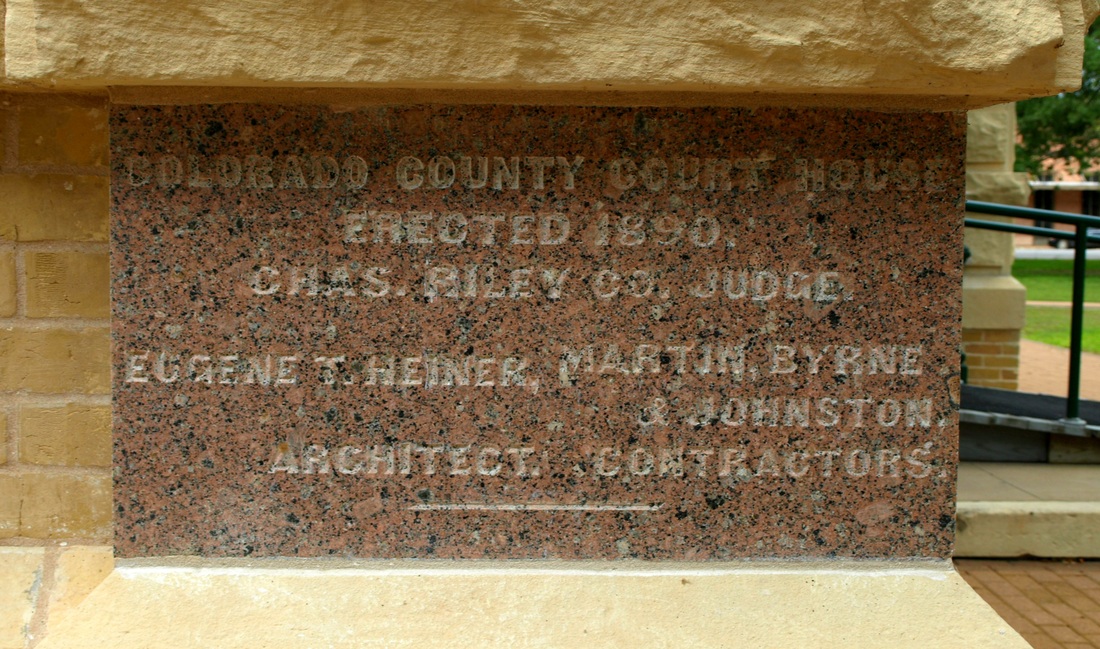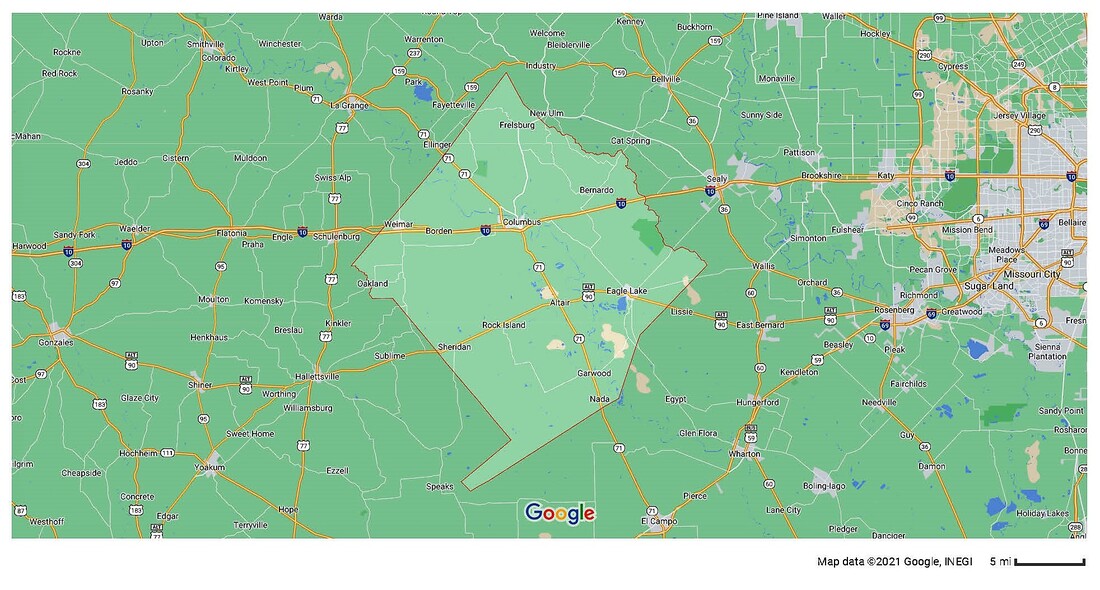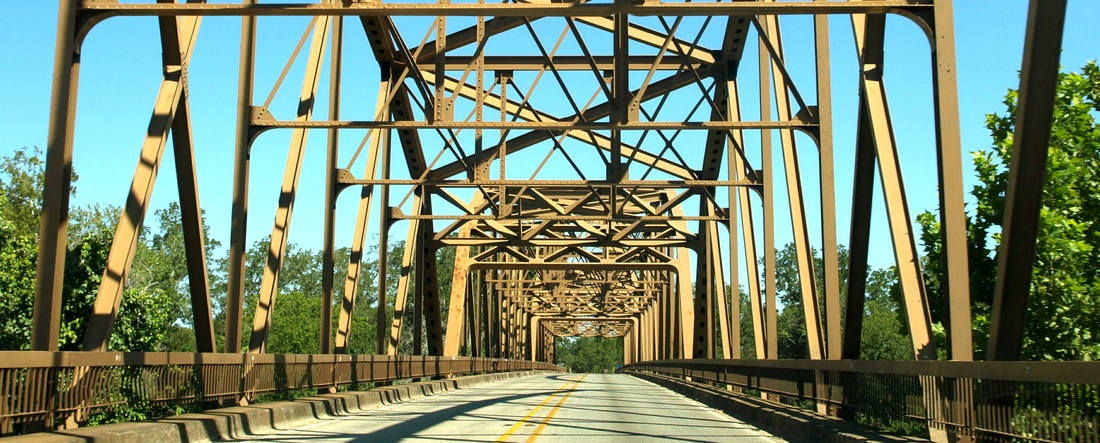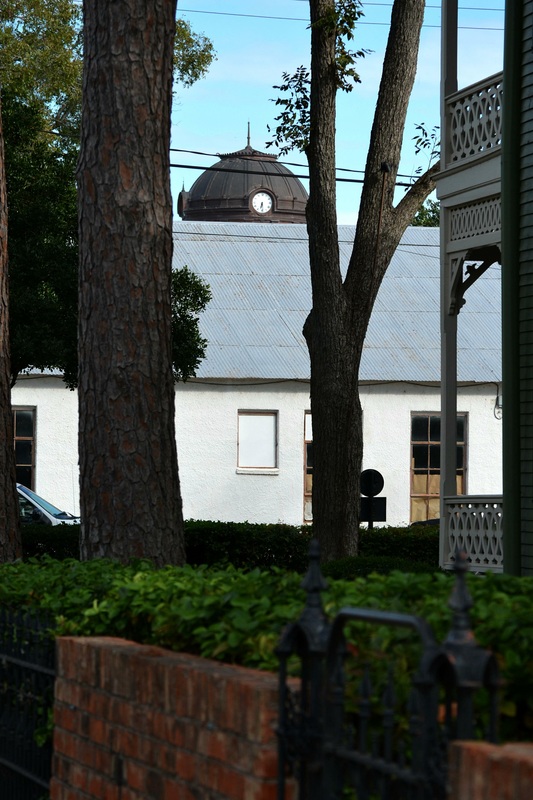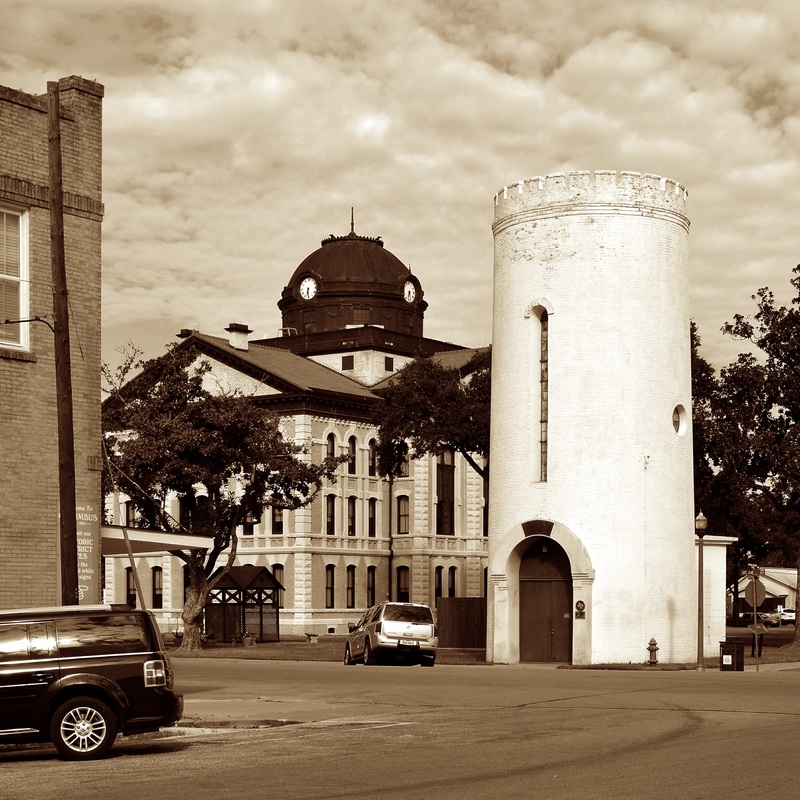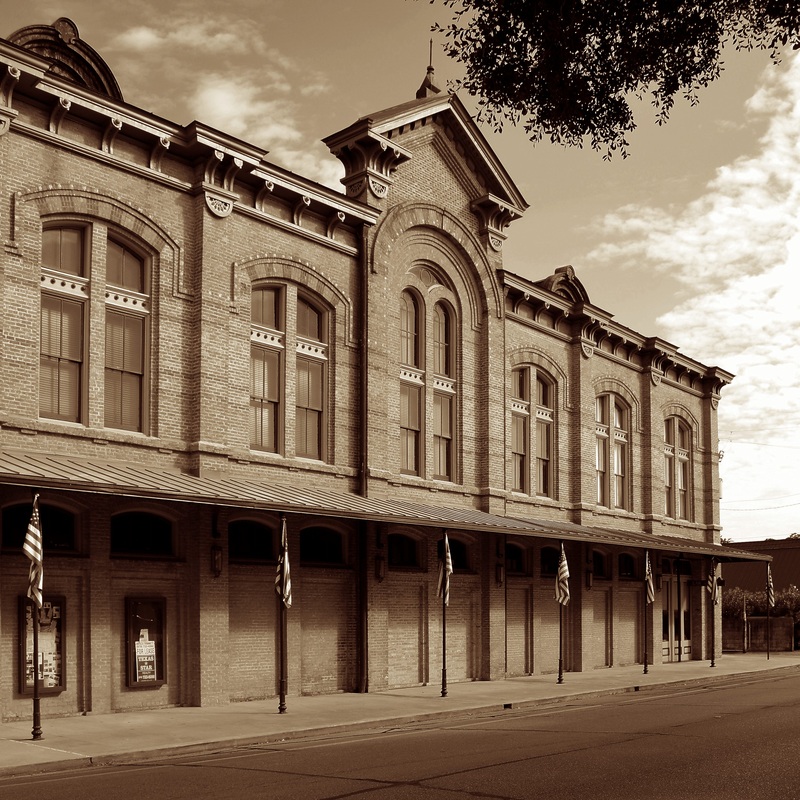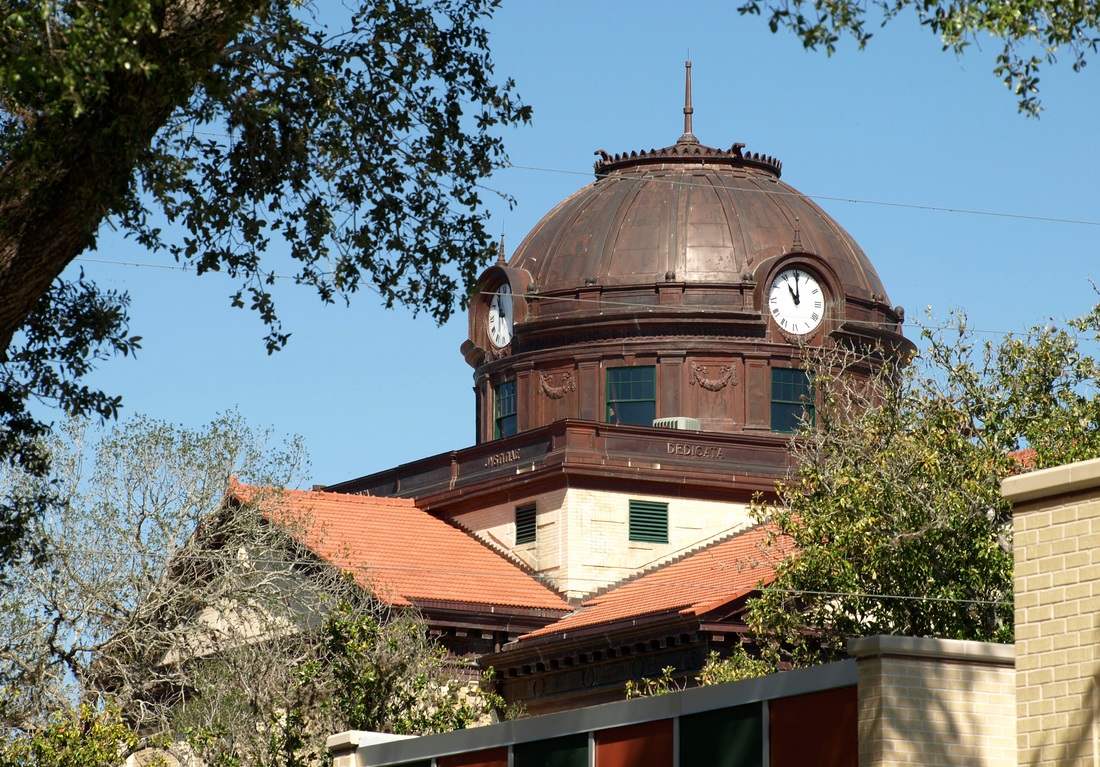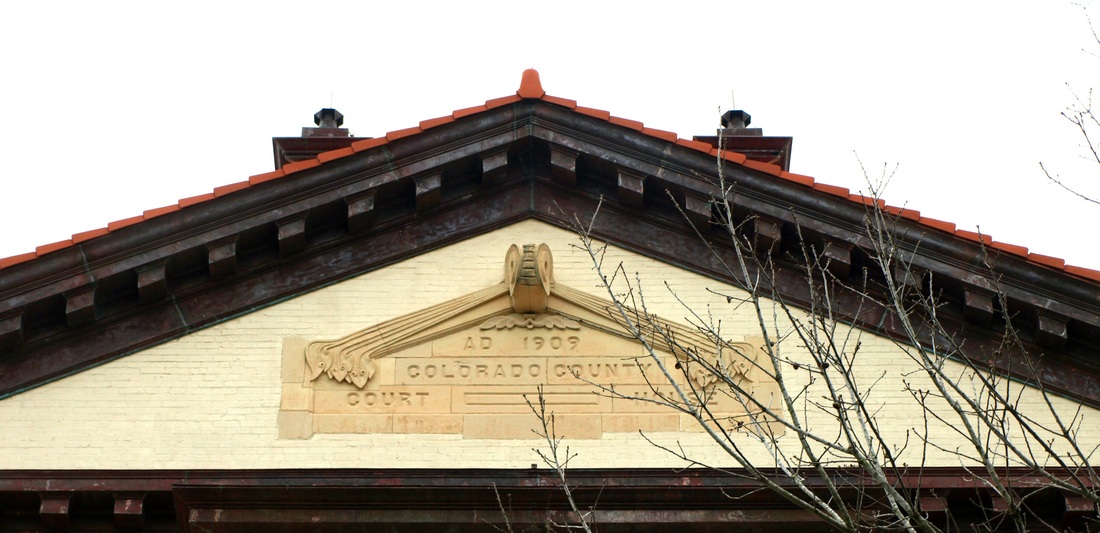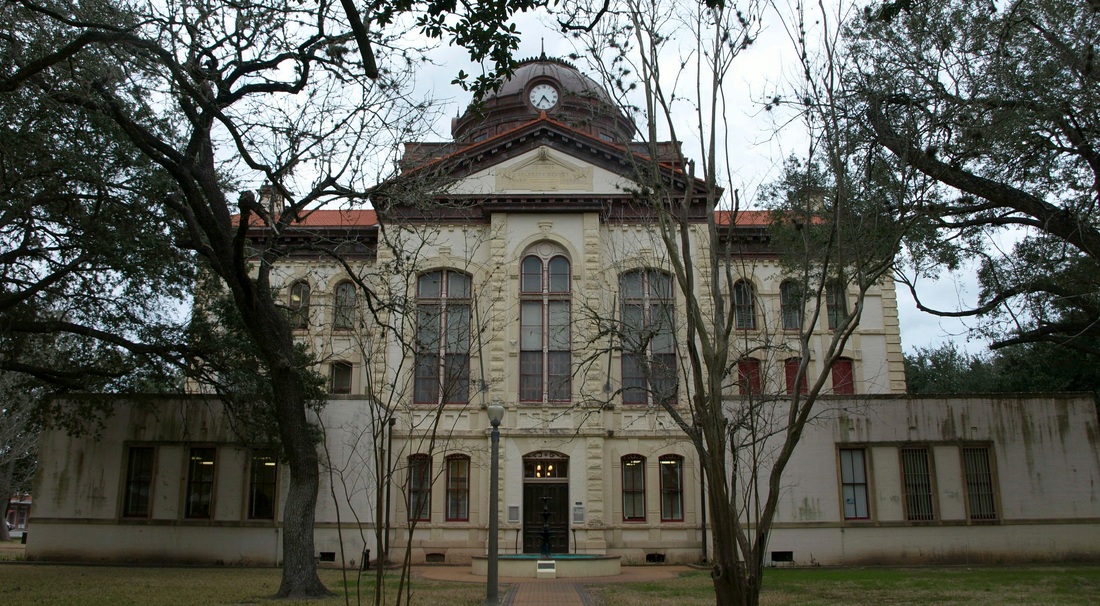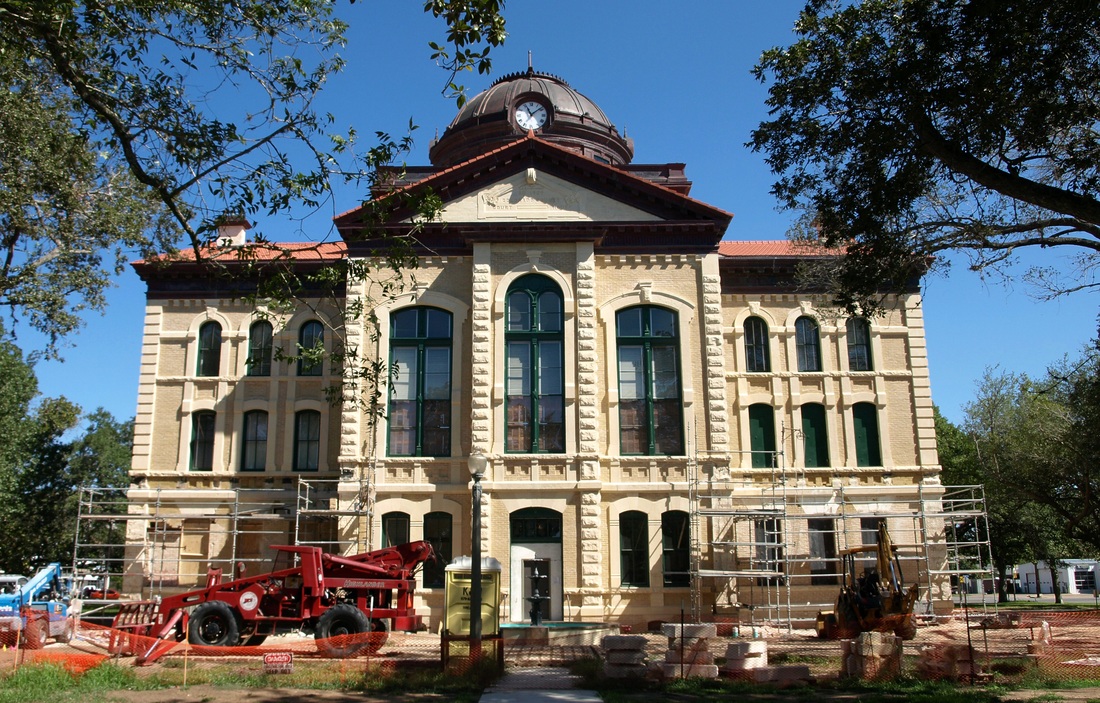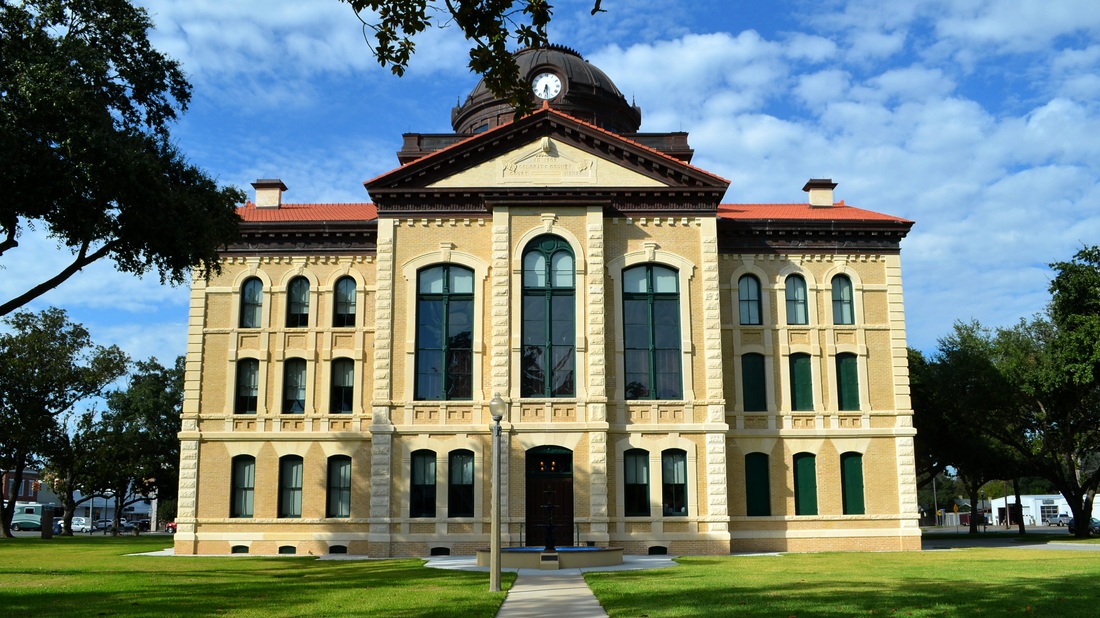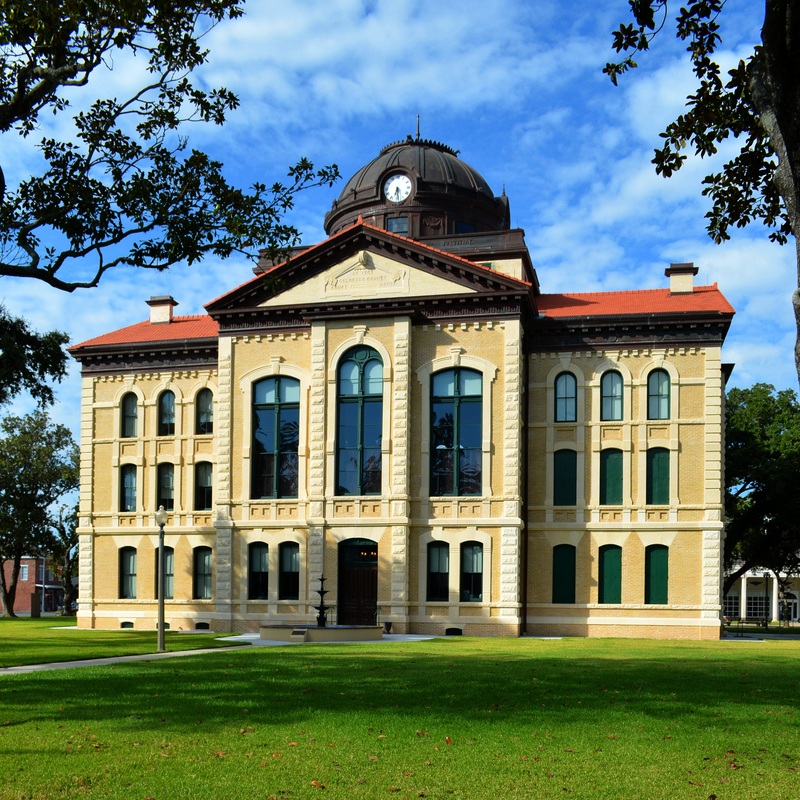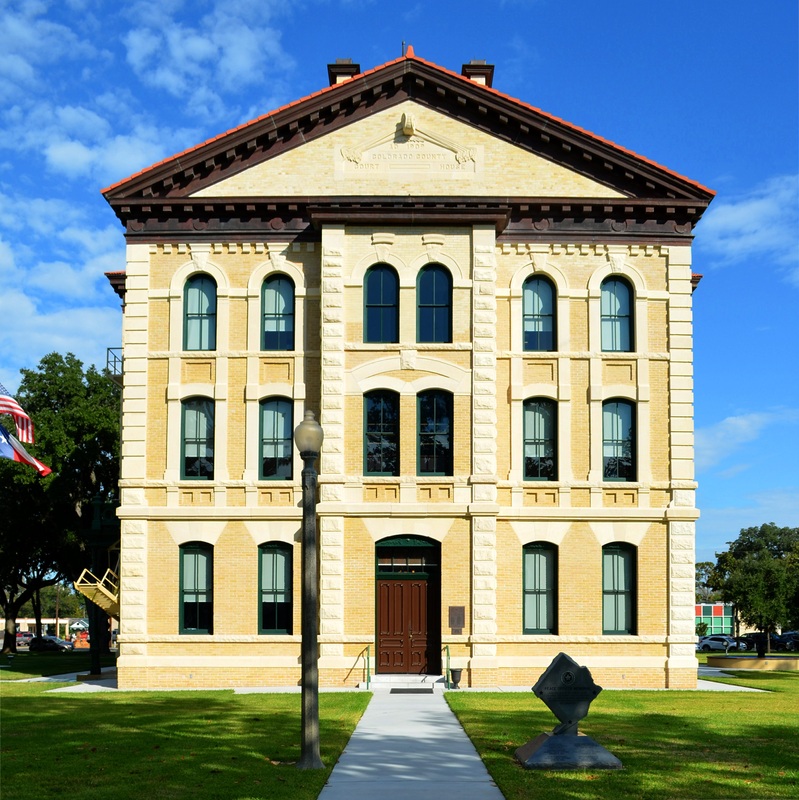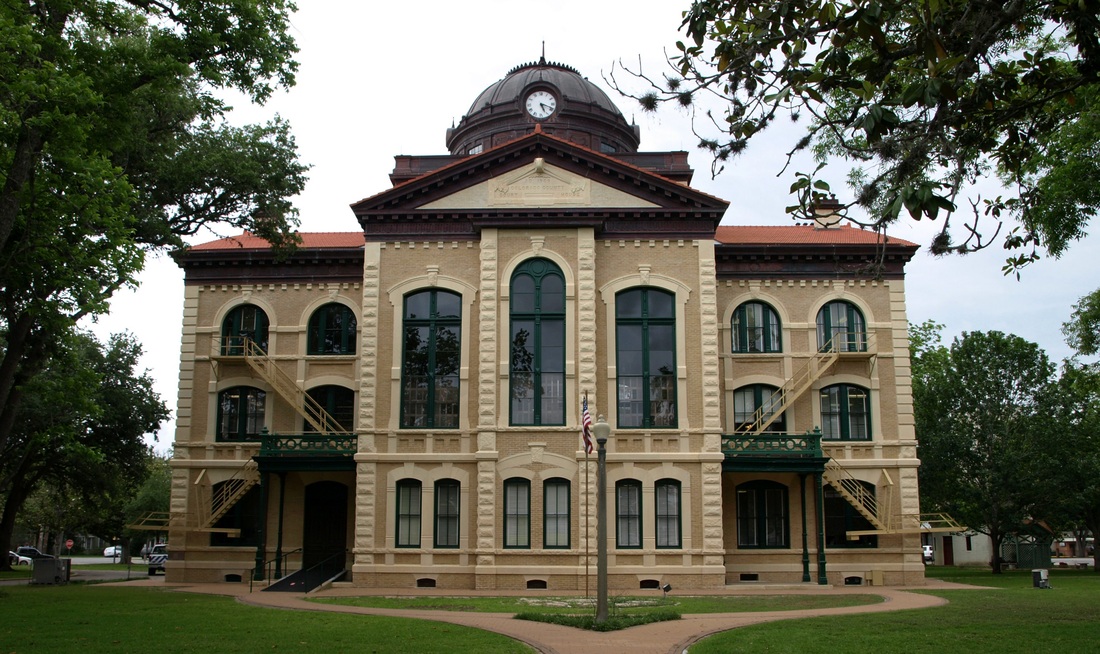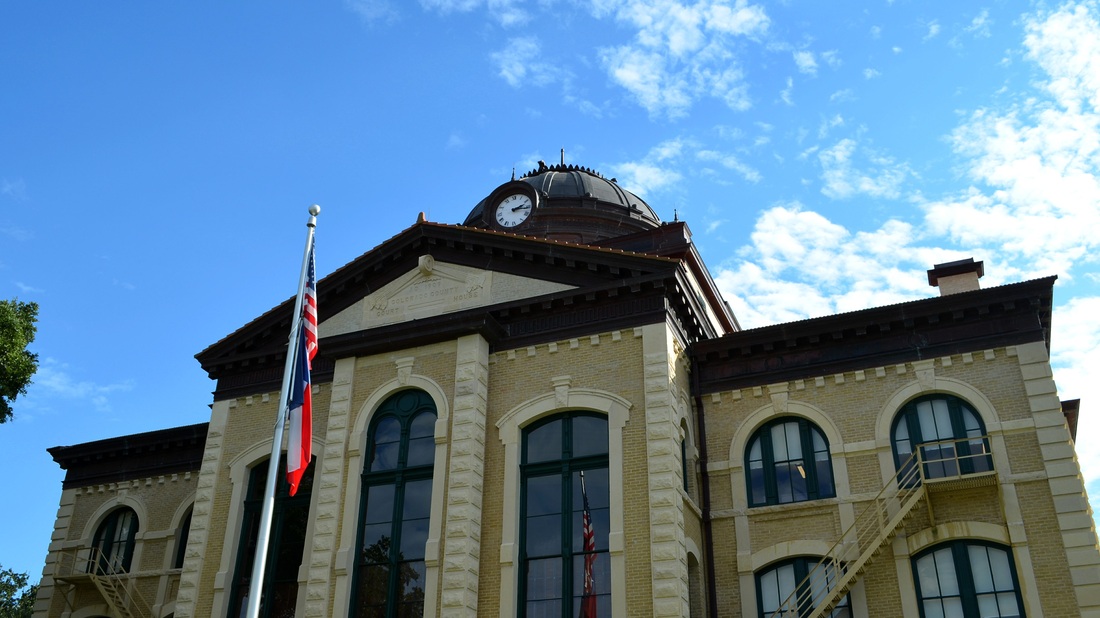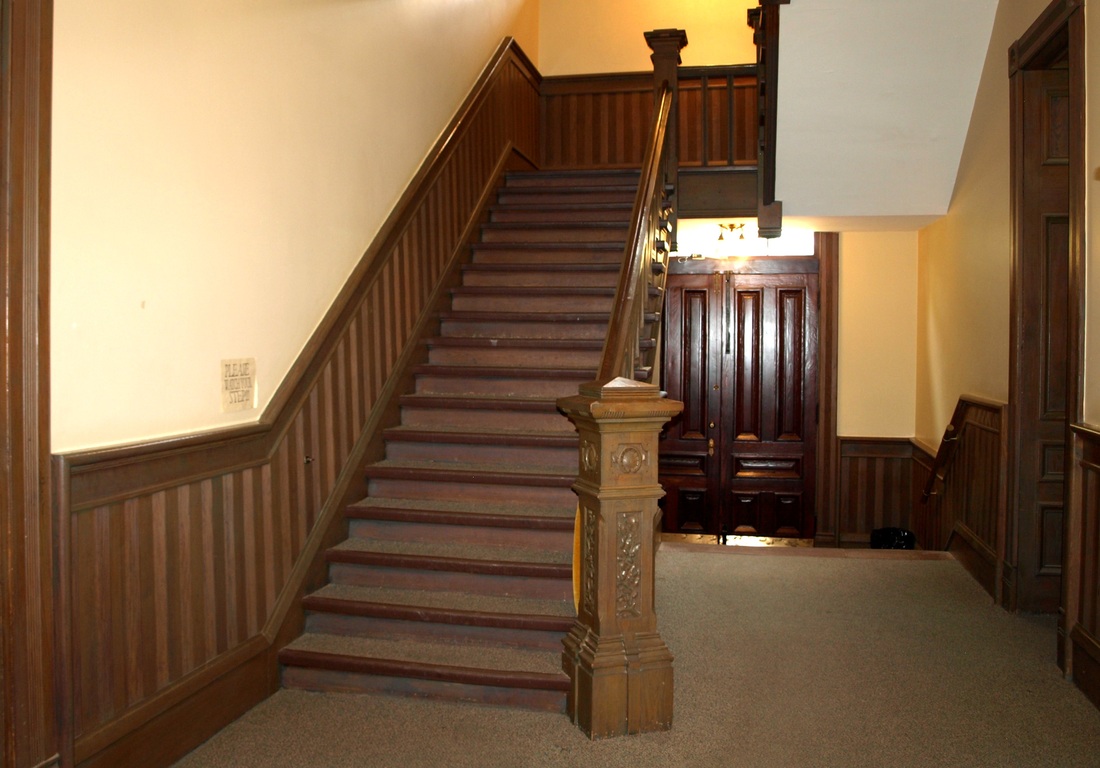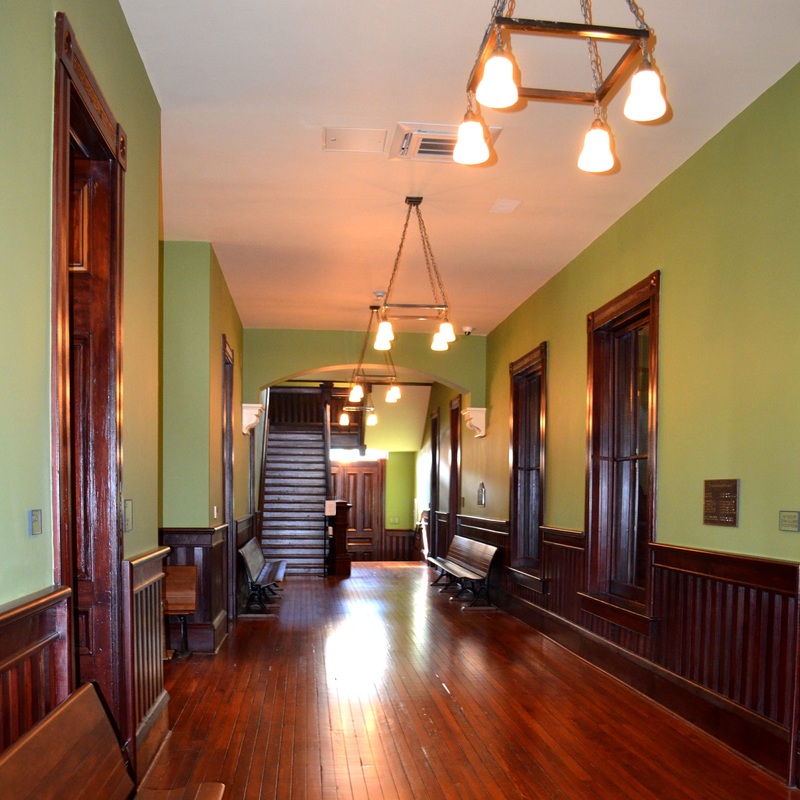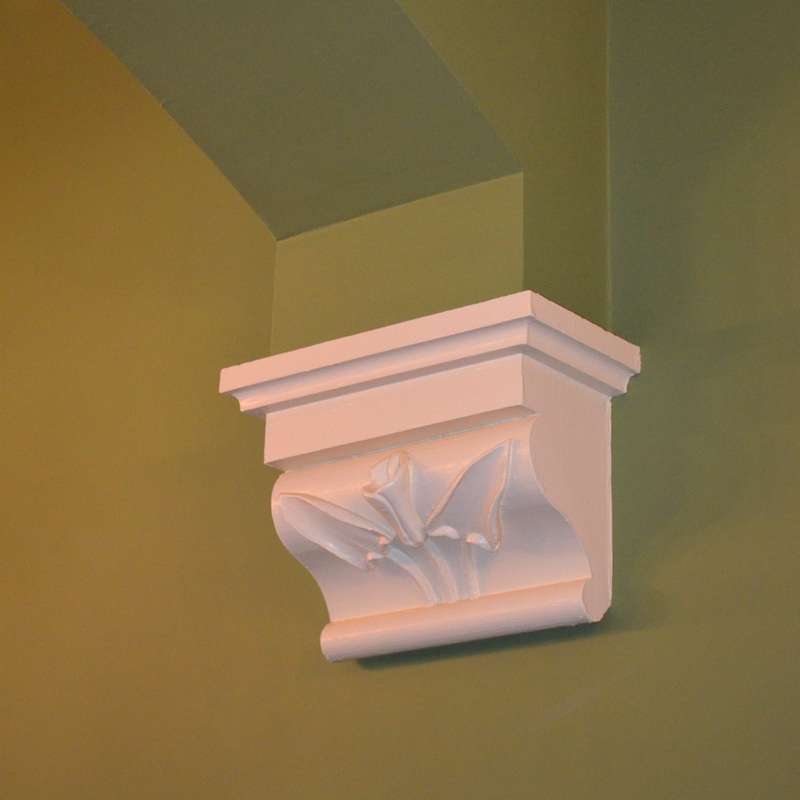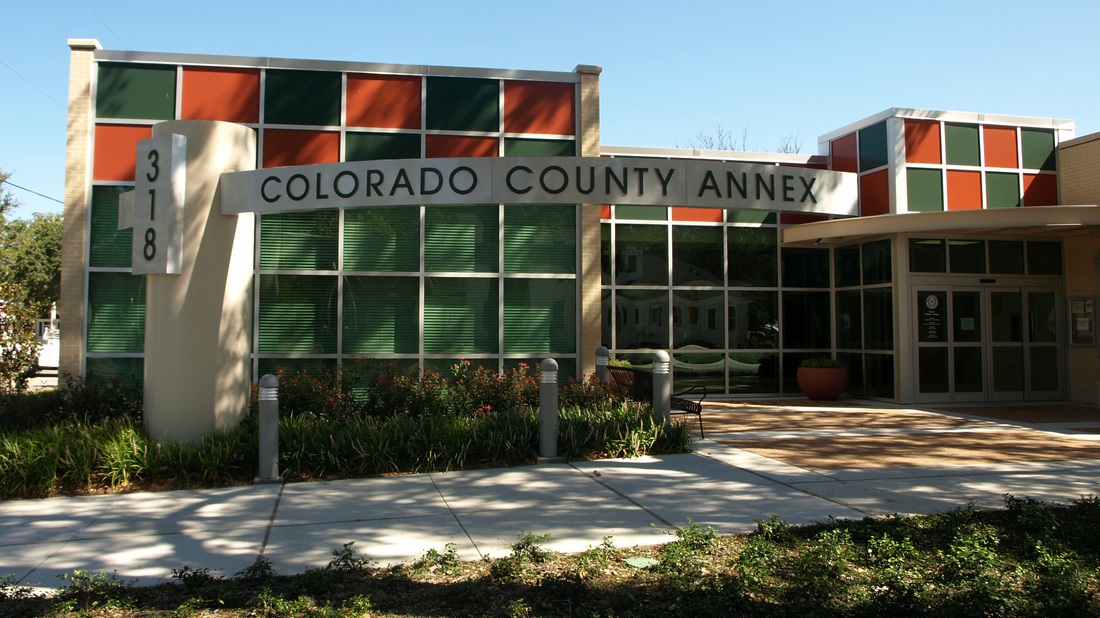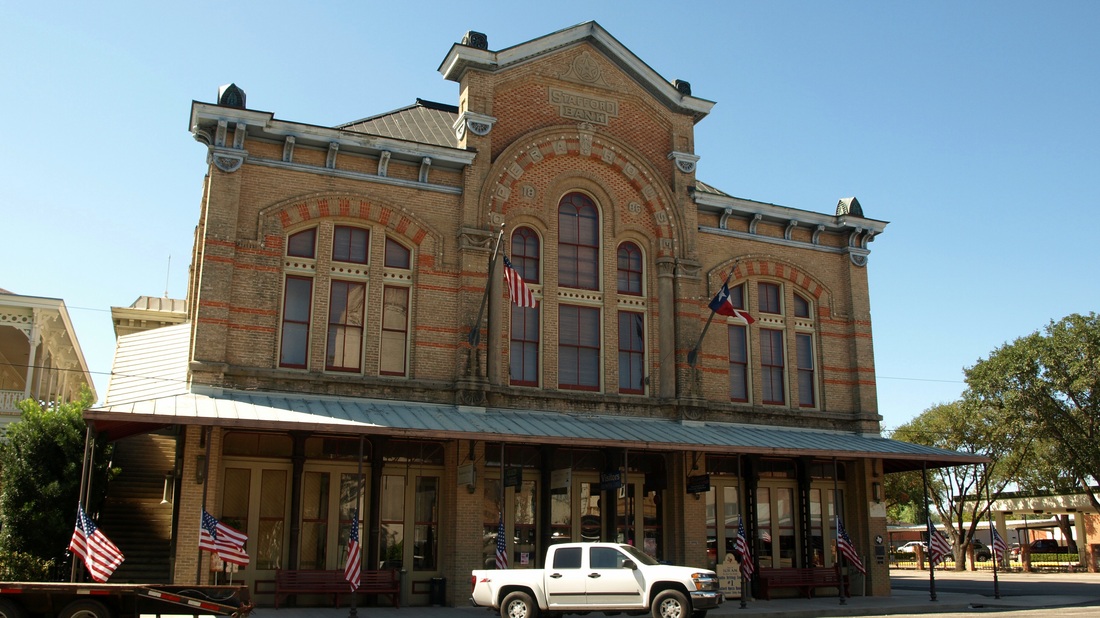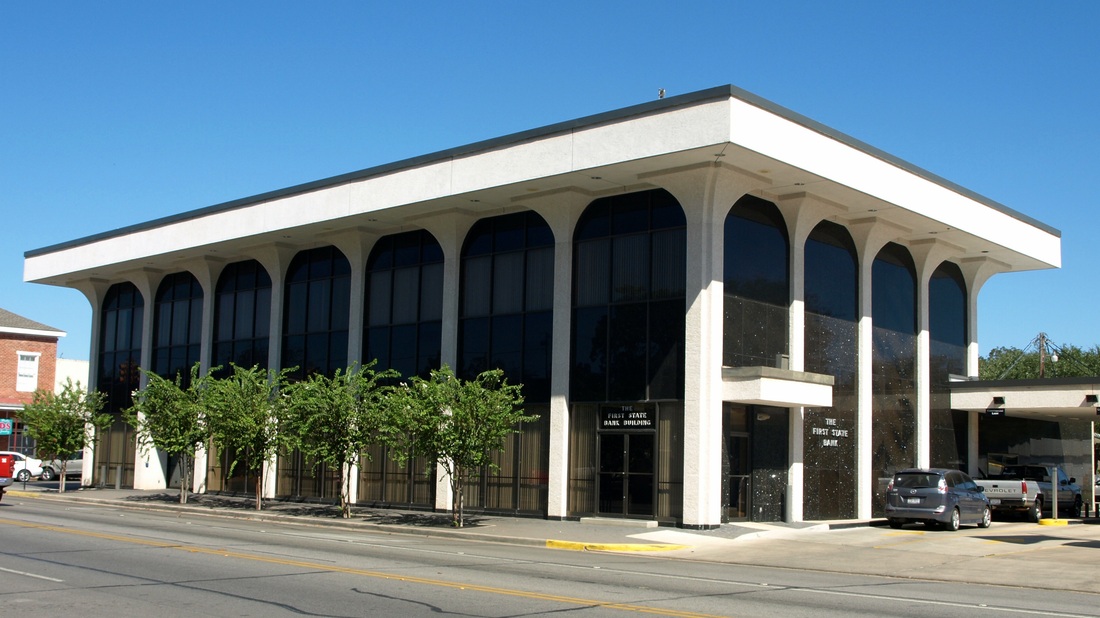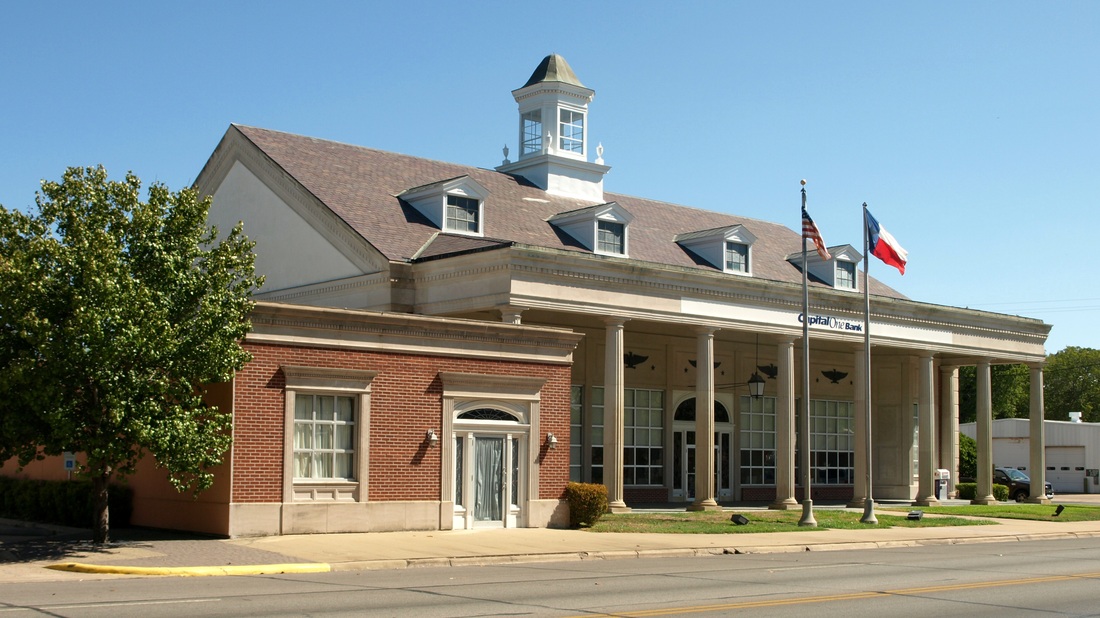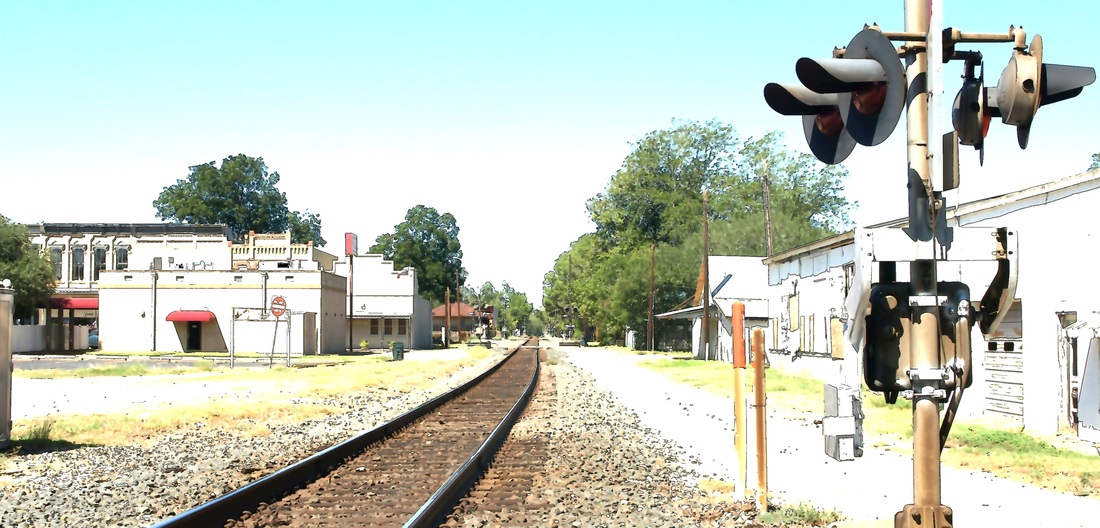034 of 254: Colorado County Courthouse, Columbus, Texas. County Population: 20,874
"The city of live oaks and live folks."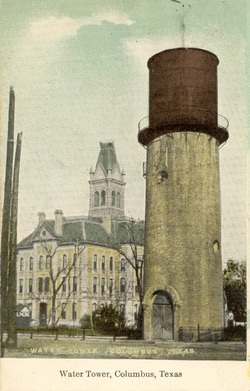 Image courtesy of courthousehistory.com
One of the oldest towns in Texas, Columbus serves as the county seat of Colorado County and contains a wealth of Greek Revival and Victorian architecture.
Dominating the historic town is the Colorado County courthouse which stands in the center of the courthouse square. Designed in 1890 by the well-known architect Eugene T. Heiner from Houston, the 19th century, three-story, brick courthouse represented the typical late 19th century imposing Victorian public structure. The original building contained a hipped roof with cresting over each of the dominant masses and a small pediment over the central entrance bay. Rising from the center of the roof was a tall clock tower with a truncated hipped roof and corner bartizans surrounding the clock face. In 1909 a tornado destroyed the tower and much of the roof. Subsequent remodeling retained the original three floors, but changed the roof and tower. From the National Register narrative The courthouse was re-dedicated on May 17, 2014, following a complete restoration, funded in part by the Texas Historical Commission's Texas Historic Courthouse Preservation Program. The restoration returned the courthouse to its 1909 condition, rather than the original 1890 building. I visited Colorado County and photographed the courthouse in Columbus on January 27, 2010, September 3, 2011, May 1, 2012 and October 23, 2014. |
"Colorado County, located about sixty miles above the Gulf of Mexico in south central Texas, is bounded on the northeast by Austin County, on the southeast by Wharton County, on the south by Jackson County, on the southwest by Lavaca County, and on the northwest by Fayette County. The county was named for the Colorado River, which bisects it northwest to southeast. Columbus is the county seat. The county includes 964 square miles of level to rolling land with elevations that range from 150 to 425 feet above sea level.
"The territory that is now Colorado County was settled by Anglo colonists, many of whom belonged to Stephen F. Austin's Old Three Hundred, beginning in 1821. Colorado County, one of the original counties of the Republic of Texas, was formed in 1836 and organized in 1837, the first district court being held by Robert M. Williamson in April 1837 at Columbus, the county seat."
Mark Odintz, "COLORADO COUNTY," Handbook of Texas Online
"The territory that is now Colorado County was settled by Anglo colonists, many of whom belonged to Stephen F. Austin's Old Three Hundred, beginning in 1821. Colorado County, one of the original counties of the Republic of Texas, was formed in 1836 and organized in 1837, the first district court being held by Robert M. Williamson in April 1837 at Columbus, the county seat."
Mark Odintz, "COLORADO COUNTY," Handbook of Texas Online
